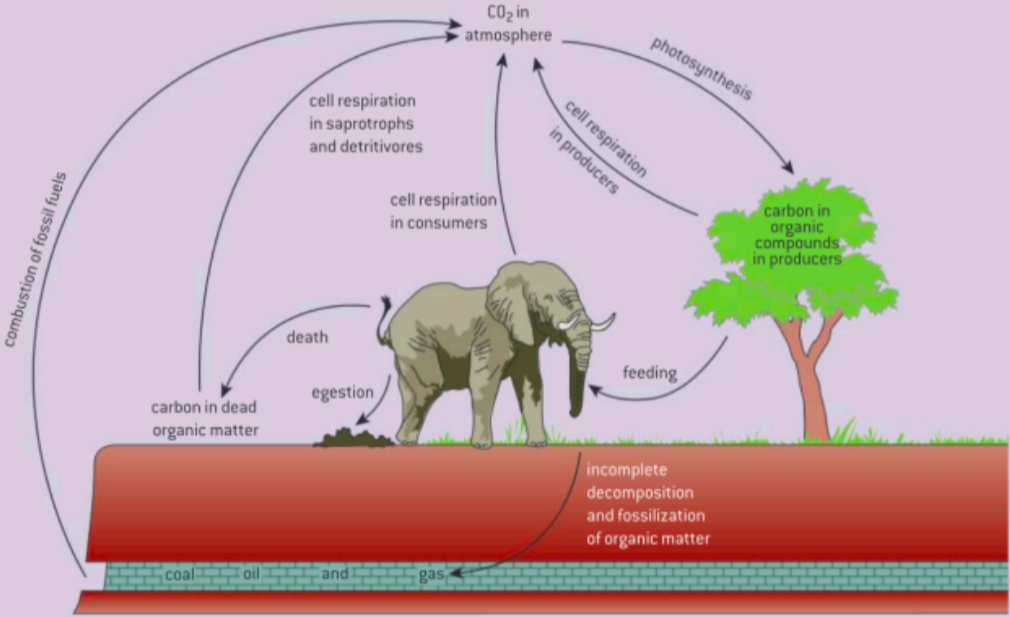4.3 The Carbon Cycle
1/11
Earn XP
Description and Tags
Name | Mastery | Learn | Test | Matching | Spaced |
|---|
No study sessions yet.
12 Terms
Review: Importance of Light, Ecosystems, Community, and Biospheres
Light from sun is initial energy source for most communities
Ecosystem - a community and its abiotic environment
Community - a group of organisms living and interacting with each other in an area
Biosphere - made up of interrelated and interdependent ecosystems

What are examples of Habitats?
Forests
Marine
Tundra
Grassland
Freshwater
Desert
What abiotic elements would affect ecosystems?
rainfall
temp.
soil pH
minerals
What nutrients (which are cycled through ecosystems) were mentioned in the lesson?
Carbon
Oxygen
Water
Phosphorus
Nitrogen
Sulfur
Energy can enter and leave an ecosystem, but nutrients must be _________
recycled
What processes are involved in the interaction between all biospheres?
photosynthesis, respiration+decomposition fossilization, and combustion.
How does Photosynthesis affect carbon in Biosystems?
atmospheric CO2 is used to produce organic compounds in autotrophs (mostly plants and algae)
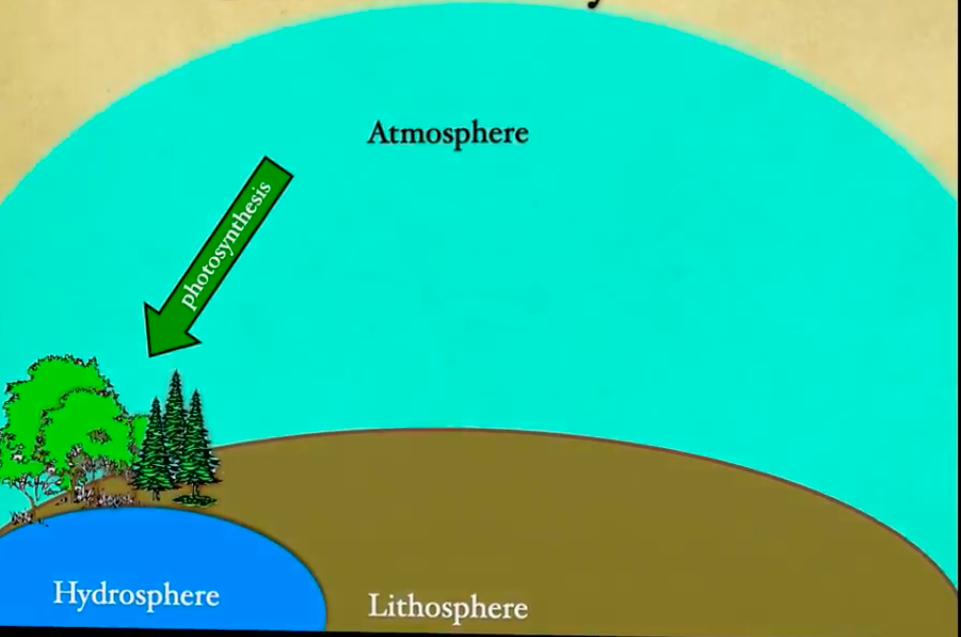
How does Consumption affect carbon in Biosystems?
Heterotrophs consume these compounds and incorporate them into their bodies.
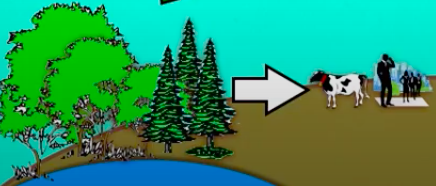
How does Respiration+ Decomposition affect carbon in Biosystems?
releases carbon compounds back into the atmosphere
(like me after doing 3 pushups 😋)
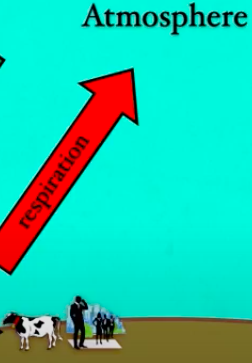
How does Fossilization affect carbon in Biosystems?
When organisms die, some of the carbon compounds are fossilized and therefore sequestered (stored) in the earth.
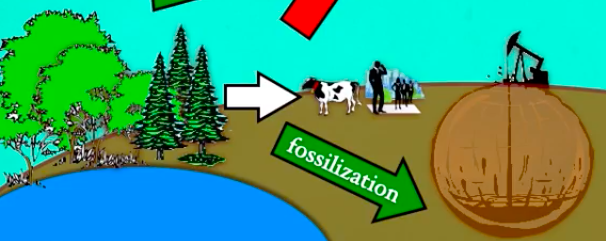
How do Combustion affect carbon in Biosystems?
When fossil fuels and other organic materials are burned, carbon compounds are released into the atmosphere.
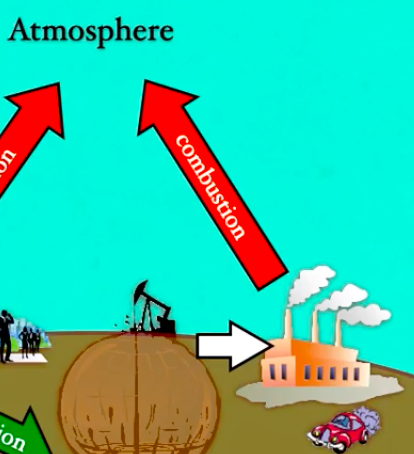
The Diagram to Memorize
